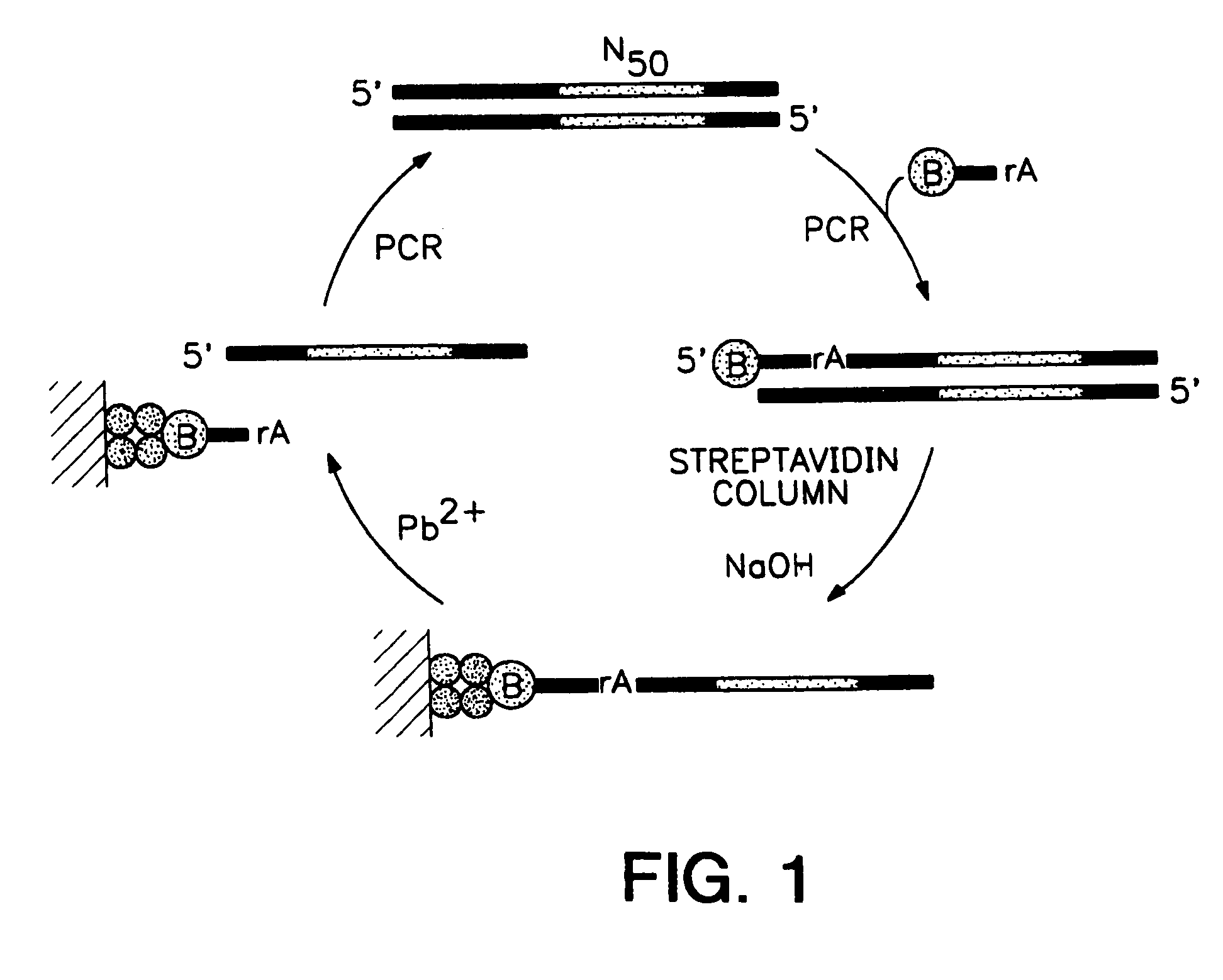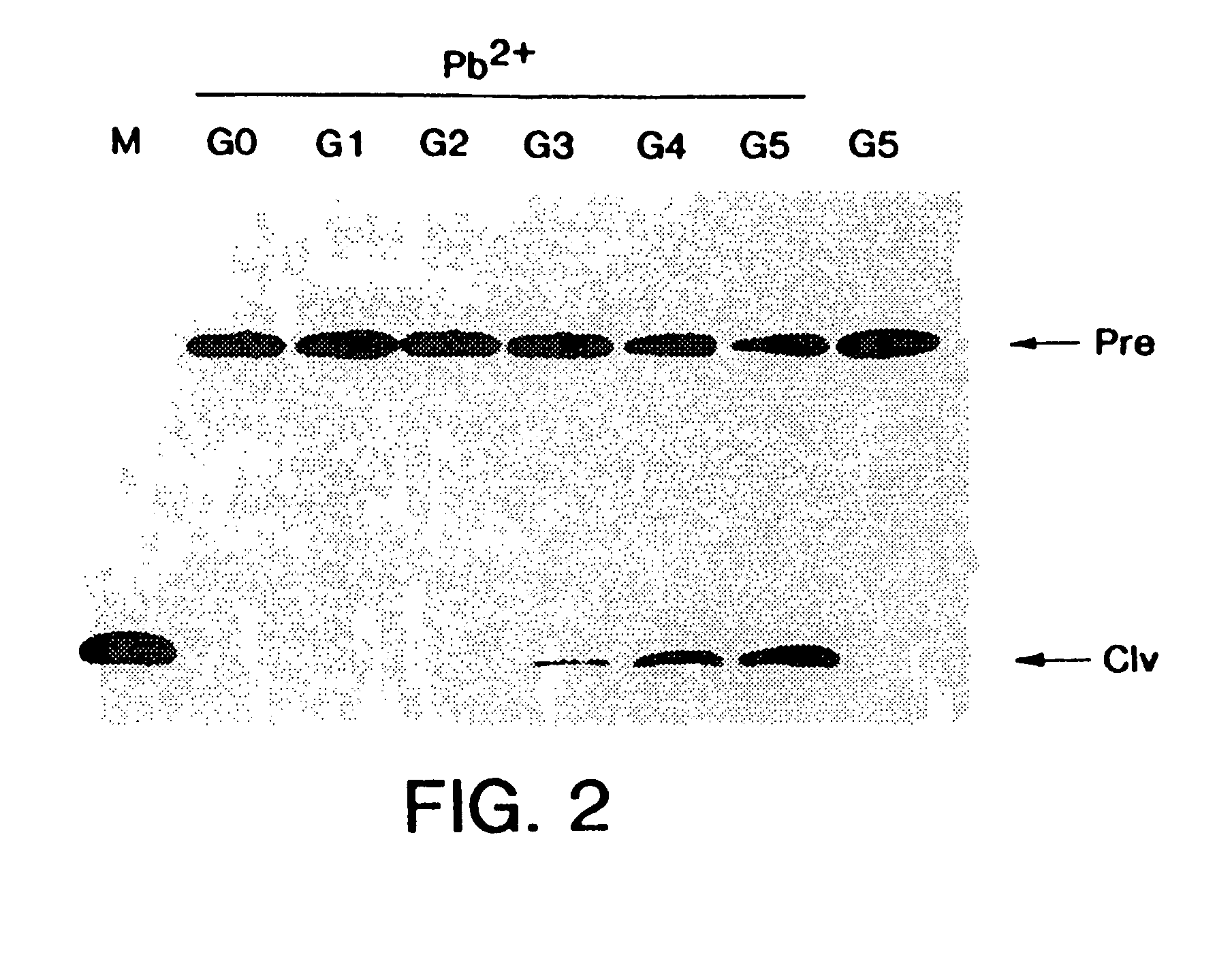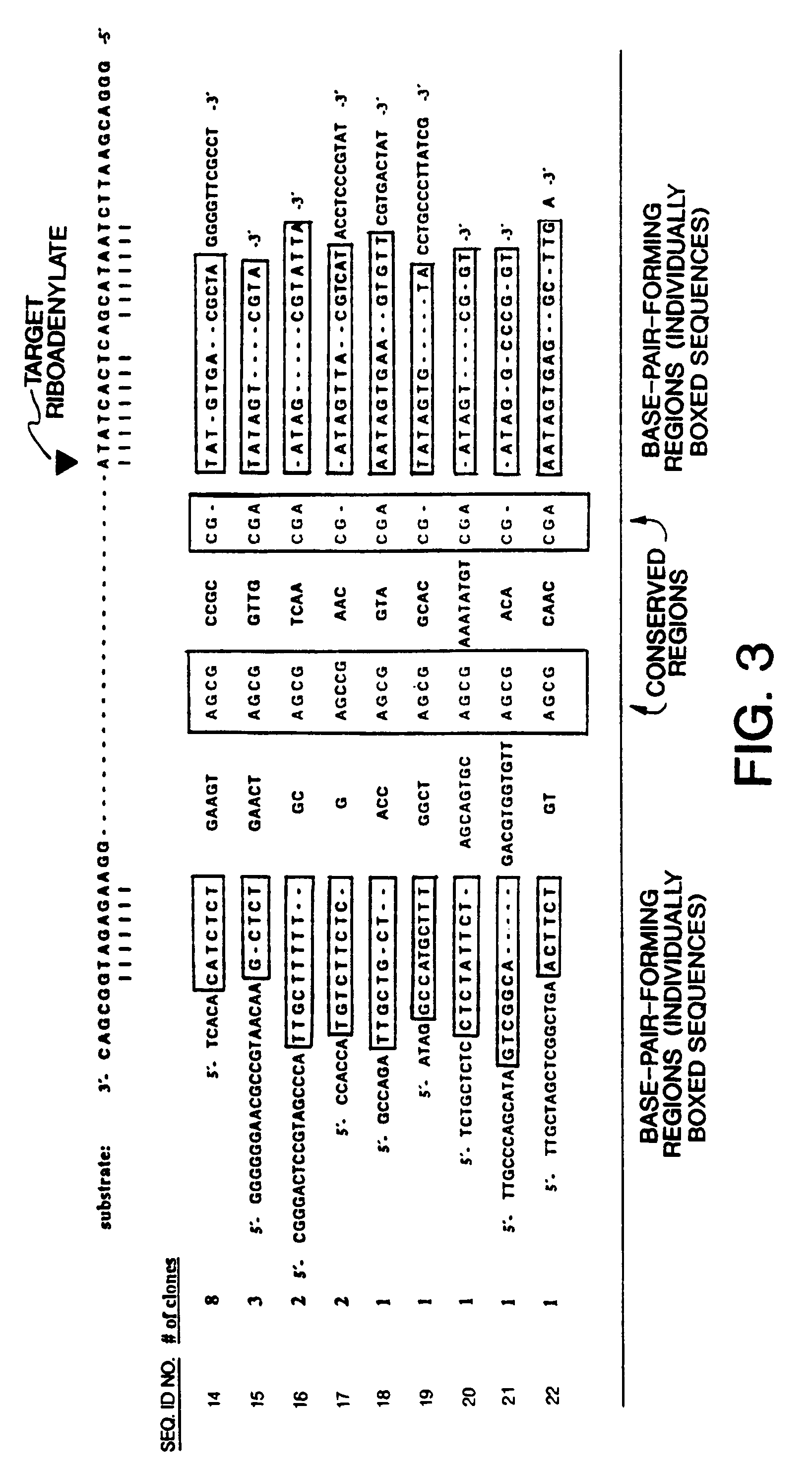Enzymatic DNA molecules
a technology of enzymatic dna and nucleic acid, which is applied in the field of nucleic acid enzymes or catalytic (enzymatic) dna molecules, can solve the problems of insufficient proficiency in the fields of protein structure and chemistry to make the generation of novel biological catalysts routine, fundamentally new or improved,
- Summary
- Abstract
- Description
- Claims
- Application Information
AI Technical Summary
Benefits of technology
Problems solved by technology
Method used
Image
Examples
examples
[0161]The following examples illustrate, but do not limit, the present invention.
1. In Vitro Evolution of Enzymatic DNA Molecules: An Overview
[0162]In vitro selection and in vitro evolution techniques allow new catalysts to be isolated without a priori knowledge of their composition or structure. Such methods have been used to obtain RNA enzymes with novel catalytic properties. For example, ribozymes that undergo autolytic cleavage with lead cation have been derived from a randomized pool of tRNAPhe molecules (Pan et al, Biochemistry, 31:3887–3895, 1992). Group I ribozyme variants have been isolated that can cleave DNA (Beaudry et al, Science, 257:635–641, 1992) or that have altered metal dependence (Lehman et al, Nature, 361:182–185, 1993). Starting with a pool of random RNA sequences, molecules have been obtained that catalyze a polymerase-like reaction (Bartel et al, Science, 261:1411–1418, 1993). In the present example, refinement of specific catalytic properties of an evolved e...
PUM
| Property | Measurement | Unit |
|---|---|---|
| Molar density | aaaaa | aaaaa |
| Molar density | aaaaa | aaaaa |
| Molar density | aaaaa | aaaaa |
Abstract
Description
Claims
Application Information
 Login to View More
Login to View More - R&D
- Intellectual Property
- Life Sciences
- Materials
- Tech Scout
- Unparalleled Data Quality
- Higher Quality Content
- 60% Fewer Hallucinations
Browse by: Latest US Patents, China's latest patents, Technical Efficacy Thesaurus, Application Domain, Technology Topic, Popular Technical Reports.
© 2025 PatSnap. All rights reserved.Legal|Privacy policy|Modern Slavery Act Transparency Statement|Sitemap|About US| Contact US: help@patsnap.com



